lordroel
Administrator
Posts: 68,066 
Likes: 49,466
|
Post by lordroel on Sept 7, 2021 5:54:04 GMT
Day 770 of the Great War, September 7th 1916Eastern FrontHalicz (on the Dniester) on fire, and taken by Russians. Orsova (Austrian bank of Danube) occupied by Romanians. Romanian Campaign: Germans Capture Romanian Danube Forts, Along With 25,000 Prisoners and 115 Heavy GunsGeneral August von Mackensen, commanding a multinational army of Germans, Bulgarians, Austrians, and Turks, conquered the Romanian forts guarding the southern border over the Danube River at Tutracaia on September 5 and 6, 1916. Smashing the fortresses with heavy artillery, his men collected a vast haul of prisoners and heavy weapons: 25,000 captured Romanians and 115 captured heavy guns, among more equipment. The Romanians, unfortunatly, had chosen a poor time to enter the war. The Russian Army was rolling out of steam in its Brusilov Offensive - “We are close to complete exhaustion of the manpower reserves,” warned Genearl Averyanov to the Stavka on September 11 - and could expect little help from its new allies. Map: the fortress and its surrounding area Mesopotamian campaign Mesopotamian campaignBaghdad railway, over Taurus Mountains being constructed by Turkish peasants, large bodies of Turkish troops moving to Aleppo, for Mesopotamia. East African campaign: East Africa: Germans Check Imperial Advance at Kisaki Cut off from supply and reinforcement for the best part of the war, Paul von Lettow-Vorbeck’s German-African army managed to inflict a sharp check on its Imperial British pursuers at Kisaki on September 7, 1916. Lettow-Vorbeck had been successfully harassing the British railway system in Uganda while avoiding fighting a pitched battle, which he would certainly lose to the far larger army of South African General Jan Smuts. Lettow-Vorbeck’s 12,000 troops, mostly Africans with a small corps of Germans and colonial settlers, took positions in the Uluguru mountains, planning to fight a delaying battle to allow time for their supply train to move south. Smuts attacked on September 7 outside the town of Kisaki, held by 2,000 German troops. The South Africans charged the German positions head-on, but guns salvaged from the wreck of the SMS Konigsberg, manned by sailors, threw back their attack. Cavalry attacks the next day were also defeated and the Germans withdrew in good order on the 11th, having won some valuable breathing room from their opponents. When the Germans left Kisaki a few days later, the South African were incapable for pursuing any further. Aerial operations: Attack those airfieldsAs part of the general offensive policy, Officer Commanding Hugh Trecnchard has orded that German Airfields are attacked to keep the Germans on the back foot. Today, 13 Squadron bombed the large aerodrome at Douai, dropping fifty-six 20-pounders on the sheds in the southwest corner of the landing-ground. The flying-grounds at Beaucamp and Trescault were attacked by 27 Squadron with forty-five 20-pounders, though little damage was causued. The two distant aerodromes at Valenciennes and La Briquette were also bombed by 12 Squadron led by Captain Eric James Tyson, who steered by compass for seventy minutes through and over thick clouds and took his formation down through the clouds directly over their objectives. Naval operations: English ChannelErnst Voight, commanding UB-23, stops and scuttles a small French fishing fleet off the Sept Iles. EMMA, 19 tons, Master Louis Caous. FARFADET, 17 tons, Master Guillaume Morvan. JEANNE D'ARC, 17 tons, Master jean Louis Corfdir. LEONINE, 20 tons, Master Francois Le Guen. Voigt's score is now 28 ships and 3,975 tons. Naval operations: Celtic SeaHerbert Pustkuchen, in UB-29, stops and scuttles French schooner ALICE, 119 tons, carrying a load of coal from Swansea to La Rochelle. His score is now 41 ships and 53,034 tons. Werner Fürbinger, in UB-39, sinks four ships: French sailing vessel MARUERITE, 102 tons, Master Louis Portier. Crew rescued by SS Oilfield. French sailing vessel ALCYON, 163 tons, Master François Ollivier. Crew rescued by Norwegian freighter SS Hafursfjord and taken to Lisbon. British freighter SS HEATDENE, 3,541 tons, carrying iron ore from Benisaf to South Shields. Italian freighter SS MESSICANO, 4,065 tons, bound from Barry for Naples with a load of coal. Fürbinger's score is now 43 ships and 21,754 tons. Naval operations: North SeaGeorg Gerth, commanding UB-12, captures Dutch freighter SS NIOBE, 654 tons, bound from Amsterdam for Bordeaux, and sends her to Germany as a prize. His score is now 2 ships and 967 tons. Naval operations: Ligurian SeaClaus Rücker, in U-34, scuttles Italian barque LUIGIA, 917 tons, carrying a load of coal from Philadelphia to Genoa. His score is now 60 ships and 139,578 tons. Naval operations: Bay of AiguadesBritish freighter SS ACHAIA, 2,733 tons, travelling from Karachi to Cardiff with a load of wheat, hits a mine laid by Ernst Krafft in U-72 just off Oran. Also sunk are 3 motorboats being carried at the time: ALLEGRO, 7 tons, DOREEN, 9 tons, and GRIFFIN, 10 tons. A fourth boat, Puffin is damaged, but the crew use her to escape to shore. Norwegian freighter SS HISO, 1,562 tons, carrying a load of wheat from Oran to Marseille, also hits a mine laid by U-72. Krafft's opening score is 2 ships and 3 boats totalling 4,321 tons. According to Wrecksite.eu, Achaia had been renamed Alexandria before her sinking. Naval operations: German East AfricaBattleship HMS VENGEANCE fires on Kilwa Kivinje with her 12" guns. After ten minutes the town surrenders. Whaler HMS CHARON sends a shore party to searche Sinda Island. Cruiser HMS CHALLENGER carries a work party to lay buoys in Dar-Es-Salaam Harbor.
|
|
lordroel
Administrator
Posts: 68,066 
Likes: 49,466
|
Post by lordroel on Sept 8, 2021 5:35:55 GMT
Day 771 of the Great War, September 8th 1916
YouTube (Fire In The Sky - Zeppelin Shot Down Over Britain)
Western Front: Hindenburg & Ludendorff Visit Western Front
Hindenburg & Ludendorff were now in charge of the entire German war effort, both east and west. After a series of conferences on war strategy in Pless shortly after assuming command, the two men left by special train for the Western Front. It would be Hindenburg’s first visit, and Ludendorff’s first since the siege of Liège in the opening week of the war. Their first priority would be to end the heavy fighting at Verdun, the project of their predecessor, Falkenhayn. His plan to “bleed France white” had turned into “an open, wasting sore,” in Ludendorff’s words.
On September 8, Hindenburg & Ludendorff visited Bavarian Crown Prince Rupprecht’s headquarters at Cambrai. Rupprecht’s army group was responsible for the German defense at the Somme, which had not been going incredibly well from a German perspective. Casualties were incredibly high; a division’s worth of men needed to arrive on the front daily, meaning that relief for front-line units was getting scarcer and scarcer. German artillery was outnumbered and outgunned. Ludendorff wrote that the troops
fought too doggedly, clinging too resolutely to the mere holding of ground, with the result that the losses were heavy. The deep dugouts and cellars often became fatal mantraps. The use of the rifle was being forgotten, hand grenades had become the chief weapon, and the equipment of the infantry with machine guns and similar weapons had fallen far behind that of the enemy.
He phoned back to OHL that “enormous errors have been made, and it is high time to put things right.” Defense should be made in depth, rather along a narrow front line that could be broken by concentrated artillery fire. Communications needed to be improved between generals and front-line units, and between artillery, flying artillery spotters, and infantry. Some of these developments were happening organically on small scales (as they had around Guillemont), but the fiat from OHL would eventually have a huge impact.
After only one day at Cambrai, Hindenburg & Ludendorff returned to Pless; they did not visit the front line themselves.
East Africa campaign
South African troops attack German troops led by General von Lettow-Vorbeck at Kisaki, German East Africa.
British naval aeroplanes bomb aerodrome at St. Denis Westrem (5 miles west of Ghent).
Aerial operations: shooting a German plane over the Neterlands
Dutch soldiers shoot at a German aeroplane that wandered over Dutch territory, forcing the pilot to land in the Netherlands.
Naval operations: Celtic Sea
Otto Steinbrinck, commanding UB-18, sinks Swedish freighter SS GAMEN, 2,619 tons, bound from Barry for Algiers with a load of coal. His score is now 68 ships and 49,055 tons.
Ernst Voigt, in UB-23, sinks two ships off Ushant:
French schooner MARIE LOUISE, 157 tons, out of Bordeaux for Port Talbot with a load of pit props. Sen on fire and sunk.
Spanish freighter SS MAYO, 1,880 tons, carrying a load of coal from Newport, Monmouthshire, Wales to Bordeaux.
Voigt's score is now 30 ships and 5,855 tons.
Werner Fürbinger, in UB-39, sinks three more Allied ships.
French schooner JEUNE UNION, 267 tons, en route from La Rochelle to Swansea with a load of pit props.
Norwegian freighter SS LYDERHORN, 939 tons, bound from Seville for Arklow with a load of copper pyrite.
Spanish freighter SS OLAZARRI, 2,585 tons, carrying a load of iron ore from Bilbao to Glasgow.
Fürbinger's score is now 46 ships and 25,545 tons.
Naval operations: Mediterranean Sea
Claus Rücker, in U-34, sinks Norwegian freighter ELIZABETH IV, 7,395 tons, carrying a load of sugar from Paseroean, Java to Marseille. His score is now 61 ships and 146,973 tons.
Wolfgang Steinbauer, in UB-47, sinks three Allied ships off Cape Matapan, Greece:
British freighter SS BUTETOWN, 3,789 tons, carrying a load of coal from Malta to Mudro.
British freighter SS LLANGORE, 3,841 tons, bound from Montreal for Salonika with a load of oats.
Greek freighter SS SPETZAI, travelling from Cyprus to Liverpool with an unnamed cargo.
Steinbauer's score is now 4 ships and 18,534 tons.
|
|
lordroel
Administrator
Posts: 68,066 
Likes: 49,466
|
Post by lordroel on Sept 9, 2021 5:04:07 GMT
Day 772 of the Great War, September 9th 1916Western Front: The Somme: Battle of Ginchy, Somme Campaign at a Tipping PointA heavy British bombardment fell on the town of Ginchy the morning of September 9, leaving an eerie silence in its wake for the rest of the day until early that evening, when Irish Tommies of the 16th Division leapt out of their trenches and attacked the German line. The battle fell three days after Guillemont was taken, and moved the rest of the Fourth Army up to forward positions where it could prepare for a new wave of attacks in September. The French Tenth and Sixth armies to the south were also conducting their own offensives. The decision to launch the battle in the evening successfully denied the Germans time to organize a counter-attack in the vital period immediately after the redoubt was lost. The battles marked the continuing success of Entente tactics on the Somme. These were “bite-and-hold” attacks, which struck parts of the German line and isolated them, holding off counterattacks, always preparing for more attacks somewhere else. The effect of this strategy was like a boxer in the ring, constantly moving and jabbing where his opponent was weakest. The exhausted German armies had trouble responding; prisoners showed the Germans were already calling up conscripts from the class of 1917. However, despite their successes, Haig and Joffre still were not getting along. Joffre accused the British of a slow and overcautious temperament, while Haig wrote in his diary that French soldiers lacked offensive spirit. Photo: Battle of Ginchy. Supporting troops moving up to the attack near Ginchy, 9th September 1916 Photo: British stretcher bearers at the Battle of Ginchy, Somme, France : Carrying wounded across the battlefield under shell fire Photo: British stretcher bearers at the Battle of Ginchy, Somme, France : Carrying wounded across the battlefield under shell fire
 Eastern Front Eastern FrontFall of Silistria (Danube). Germany: Hindenburg & Ludendorff Discuss Full Economic War MobilizationAlready back in Pless after their brief visit to the Western Front, Hindenburg & Ludendorff began meeting with a series of German industrialists and financiers. This began on September 9 with Carl von Duisberg (of IG Farben) and Gustav Krupp, chemical and munitions magnates, respectively. They had been convinced during the political intrigue leading up to Falkenhayn’s dismissal that Hindenburg & Ludendorff would better serve their interests, and they appropriately curried favor with Hindenburg at Pless now that he was in the ascendant. They also seriously discussed economic matters with Ludendorff, who was convinced that the German economy was not producing what was necessary for the war effort. The economy needed to be fully mobilized for the war, just as young men had been for the Army; there was still untapped labor that could be used on the home front. Krupp and Duisberg were very interested in this sort of talk, especially if it led to political changes that curtailed workers’ victories of the past few decades. Naval operations: Celtic SeaOtto Steinbrinck, commanding UB-18, attacks four vessles off Castle Rock. French schooner GEORGES ANDRE, 229 tons, bound from Bordeaux for Port Talbot with 220 tons of pit props, scuttled. French dandy MYOSOTIS, 64 tons, carrying 70 tons of pit props from Vannes to Cardiff, scuttled. Norwegian freighter SS LODSEN, 1,247 tons, carrying a load of coal from Cardiff to Lisbon, scuttled. British Q-Ship HMS CARRIGAN HEAD. Steinbrinck engages the disguised warship with his deck gun and wins the fight. CARRIGAN HEAD survives the encounter and makes port safely. Steinbrinck's score is now 71 ships and 50,595 tons. Ernst Voigt, in UB-23, sinks two vessels off Wolf Rock. Italian freighter SS GEMMA, 3,111 tons, travelling in ballast from Civitacchia to Barry. French sailing dandy REMORA, 92 tons, carrying a load of pit props from Pauillac to Newport, Walses. Voight's score is now 32 vessels and 9,058 tons. Werner Fürbinger, in UB-39, sinks two vessels. French schooner EUROPE, 356 tons, travelling in ballast from Saint Nazaire to Cardiff, scuttled. Norwegian freighter SS PRONTO, 1,411 tons, carrying a load of salt fish from Pasajes to Bristol. Fürbinger's score is now 48 ships and 37,312 tons. Naval operations: English ChannelHerbert Pustkuchen, in UB-29, attacks a small British fishing fleet off Start Point, Devonshire, scuttling four smacks. CONSOLATION, 47 tons. DORADO, 36 tons. FAVOURITE, 38 tons. MURIEL FRANKLIN, 29 tons. His score is now 45 vessels and 54,184 tons.
|
|
lordroel
Administrator
Posts: 68,066 
Likes: 49,466
|
Post by lordroel on Sept 10, 2021 5:05:46 GMT
Day 773 of the Great War, September 10th 1916Western FrontBritish line advanced a mile east of Guillemont, also 1,000 yards east of Ginchy. Five enemy attacks on French line, Berny to region south of Chaulnes, defeated. Eastern FrontRussian and Romanian forces in contact. Austrian front withdrawn west of the Valley of Gyergyo and Czik (Carp.). Macedonia FrontBritish cross the Struma at Neoliori and places above the Tahinos Lake (Macedonia). Corfu, Serbian Parliament assembles here, all ministers present. Aerial operations: WastageThe current British offensive has understandably caused an increased level of casualties. There has however been disagreement amongst the top brass about the level of casualties. On the one hand, the Officer Commanding Hugh Trenchard remains committed to the strategic offensive and the casualties that come with it. David Henderson, Director-General of Military Aeronautics has expressed concerns about the wastage rates but Trenchard has the full support of General Douglas Haig who share the view that the role of the RFC is to support the army and that casualties are inevitable. Haig confirmed his support for Trenchard in a letter today to Henderson: “The Air Service under Trenchard has done and is doing invaluable work, and has secured practically complete mastery over the Germans. This could not have been attained, and cannot be maintained, without casualties, which, in my opinion, have been extraordinarily small in proportion to work done and results achieved.” Nevertheless there is agreement that losses could be reduced with better training. However the current demand results in insufficiently trained pilots being sent to the front. Perhaps surprisingly, Sefton Brancker, serving as Director of Air Organisation attributes the problem not just to personnel but also to the fact that all new aircraft are going directly to the front. He wrote to Trenchard today noting: “I am not quite happy about the output of pilots: your demands of late have been big, and we have not quite come up to them. The main reason is that so many machines were sent out to you in the first week of September that training was absolutely starved in war machines.” Naval operations: Celtic SeaOtto Steinbrinck, commandein UB-18, sinks three ships near Bishop Rock. Norwegian freighter SS FURU, 2,029 tons, bound from Cardiff for Philippeville with a load of patent fuel. French barque MARECHAL DE VILLARS, 1,908 tons, carrying a load of grain from Seattle to Ipswitch. Norwegian freighter SS POLYNESIA, 4,064 tons, travelling from New York to London with a load of drummed parafin and gasoil. Steinbrinck's score is now 74 ships and 58,596 tons. Werner Fürbinger, in UB-39, sinks British freighter SS LEXIE, 3,778 tons, carrying a load of wheat from Karachi to Barry. His score is now 49 ships and 41,090 tons. Naval operations: North SeaKarsten von Heydebrick, in UB-6, scuttles Norwegian coaster SS LINDBORG, 400 tons, carrying a general cargo from Rotterdam to London. This is his first sinking. Hans Valentiner, in UB-37, captures Dutch motor ship MV ZEEMEEUW, 400 tons, bringing his score to 27 ships and 14,638 tons. French coaster SS VILLE D'ORAN, 199 tons, travelling from North Shields to Dunkirk with a load of coal, hits a mine laid by an unknown ship. Naval operations: Mediterranean SeaClaus Rücker, in U-34, sinks two sailing ships south of Sardinia. Greek barque ELLI, 631 tons, carrying a load of locust beans from Cyprus to Marseilles. Greek barque SPIRIDON, 562 tons, en route from Cyprus to Marseille with a load of carob. His score is now 63 ships and 148,166 tons. Naval operations: Germany Admits to (Some) Adriatic U-BoatsItaly’s continued neutrality with respect to Germany, for over a year after they had declared war on Austria, caused some problems for German submarines operating in the Mediterranean. As they could not legally sink “neutral” Italian ships, they had operated under Austrian flags in order to do so. This ceased to be strictly necessary when Italy finally declared war in late August, but this caused new problems of its own. If German U-boats all suddenly switched to using their own flag, observers would wonder where all the new German U-boats came from, and where all the Austrian ones went (the few actually Austrian ones aside). On September 10, the German submarine chief in the Adriatic agreed with the Austrian Navy that, for the purposes of prize courts (for the few vessels captured by submarines following prize rules), the actually German U-boats would be legally split between Germany and Austria; Emperor Franz Josef signed off on this in early October. This applied retroactively, as well, in an effort to keep up the fiction, and this confusing situation would continue to apply for the foreseeable future. Naval operations: FrancePhoto: Unnamed French battleship of the Voltaire Class at Toulon, 10 September 1916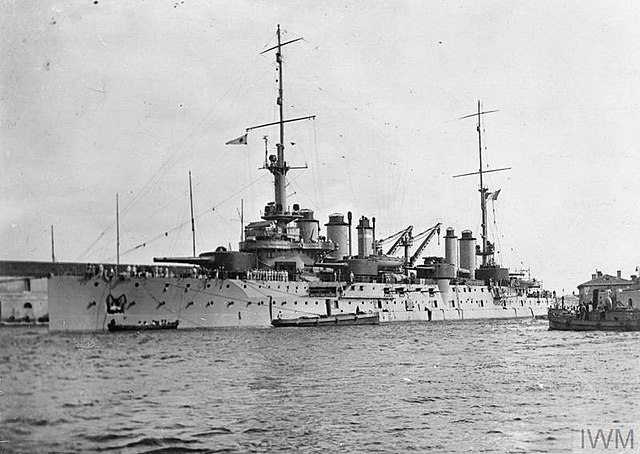
|
|
lordroel
Administrator
Posts: 68,066 
Likes: 49,466
|
Post by lordroel on Sept 11, 2021 6:04:26 GMT
Day 774 of the Great War, September 11th 1916Western FrontSomme: British heavy artillery caused large fires in enemy ammunition depot, Grandcourt, north of Pozieres. Romanian Campaign: German Army Enters TransylvaniaErich von Falkenhayn’s German Ninth broke through Romanian defenses on the 11,555-foot Rotenturm Pass on September 26 and 27 to pass into Transylvania, Entering the heart of the country, Falkenhayn’s troops captured the town of Hermannstadt, and with it 3,000 Romanian prisoners. Less than a month after joining the Entente, Romania’s hopes of gaining new territory in Hungary had been quashed, and now the country’s capital of Bucharest was in serious danger. Photo: Romanian POWs are herded to a holding camp. They wear French-style Adrian helmets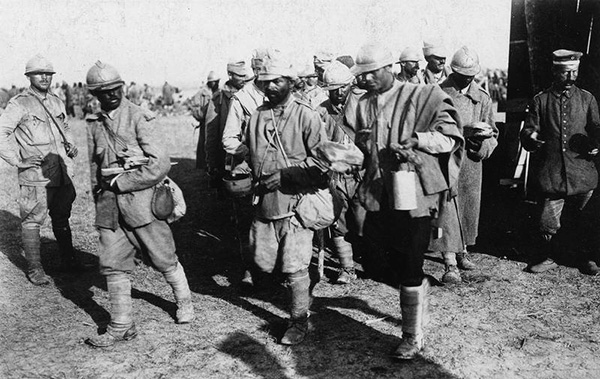 Mesopotamian campaign Mesopotamian campaignBritish defeat Turkish columns at Az Sahilan (Nazariya, Euphrates R.). JapanPhoto: Imperial Japanese Navy battlecruiser HARUNA at Yokosuka, Japan Naval operations: Celtic Sea Naval operations: Celtic SeaOtto Steinbrinck, commanding UB-18, sinks three Allied ships: Greek freighter SS ASSIMACOS, 2,898 tons, bound from Glasgow for Genoa with a load of coal, scuttled 45 miles south of the Seven Stones. Norwegian freighter SS KONG RING, 1,611 tons, carrying a load of fruit from Almeria to Glasgow, sunk 30 milse southwest of the Scilly Isles. Spanish freighter SS LUIS VIVES, 2,160 tons, travelling from Valencia to Liverpool with a load of fruits and vegetables, captured and sunk by torpedo off the Scilly Isles. Steinbrink's score is now 77 ships and 65,265 tons. Werner Fürbinger, in UB-39, sinks Norwegian freighter SS FREDAVORE, 1,577 tons, en route from Port Talbot to Nantes with a load of coal, 28 miles north of Ushant. He ends this patrol with 50 ships and 42,667 tons.
|
|
lordroel
Administrator
Posts: 68,066 
Likes: 49,466
|
Post by lordroel on Sept 12, 2021 7:12:12 GMT
Day 775 of the Great War, September 12th 1916Western FrontSomme: French take south of Combles to the river, Hill 145, Marrieres Wood, all enemy trench system up to Bapaume-Peronne road, and many prisoners. Bouchavesnes, and Hill 76, north of Peronne, taken, and part of German 3rd line. Photo: Heavy mortars ready to reinforce the French front at Neuville, next to Bernard, September 12, 1916 Romanian campaign Romanian campaignDobruja: Field Marshall von Mackensen in supreme command of German-Bulgarian forces. Romanians advance on Kronstadt (Brasso), their right flank joining Russians near Dorna Vatra. Macedonian Front4th Greek Corps of 25,000 men at Kavalla deserts (under Colonel Hatzopoulos) to the Germans. Sent to Germany as "guests". Naval operations: Celtic SeaOtto Steinbrinck, commanding UB-18, sinks Dutch tanker SS ANTWERPEN, 7,955 tons, bound from New York for London with a load of petroleum. His score is now 78 ships and 73,220 tons. Naval operations: Baltic SeaJohannes Spieß, in U-19 and operating off Grasgrund in the Gulf of Finland, sinks his first two ships since the previous November. Russian freighter SS ELIZABETH, 4,444 tons. Imperial Russian Naval transport Ije (N-18), 1,261 tons. His score is now 16 ships and 15,420 tons. Naval operations: Mediterranean SeaClaus Rücker, in U-34, scuttles Greek barque PANAGHI AKATHISTOU, 421 tons. His score is now 64 ships and 148,587 tons.
|
|
lordroel
Administrator
Posts: 68,066 
Likes: 49,466
|
Post by lordroel on Sept 13, 2021 2:48:20 GMT
Day 776 of the Great War, September 13th 1916Western FrontFrench carry by assault L'Abbe Wood farm, and trench system south of Le Priez farm, south-east of Combles, big success. Macedonia Front: French & Serbians Launch First Offensive from Salonika The Romanians had entered the war in part because they were expected the Allies at Salonika to distract the Bulgarians to their rear. The French had intended to do so, but they had been preempted by the Bulgarians, who had launched their own offensive in Macedonia on August 17; this had ground to a halt by the end of the month, but it had delayed the Allies. Over two weeks after Romanian entry into the war, they had yet to attack, and the Bulgarians, undistracted, had captured two key Romanian border forts. At long last, however, on September 12, Sarrail was ready to attack towards Monastir. The ground chosen was mountainous and unforgiving, at the extreme western end of the Greek-Serbian border. However, if he broke through the mountains, the way would be open to Veles and Skopje, and from there northwest to Nish or northeast to the Bulgarian capital, Sofia. A more direct advance, along the Vardar river valley or into the Greek territory recently occupied by Bulgaria, was dismissed as it was guarded by crack German troops. Two main forces advanced after a 6AM bombardment. Serbian forces attacked from Lake Ostrovo towards the summit of Kajmakcalan. They were determined to take the mountain, for beyond was Serbia. Their commander, General Mišić, told his men that “The valor, skill and fighting qualities which you have already shown bear you up in this battle…Our cause is just. Go forward with confidence, brave fighters, filled with hope in God.” Such hope still had to summit the 8300-foot peak of Kajmakcalan, however. The Serbians had great success in taking the foothills on the first day, but progress up the mountain was slow. To the west, the French, along with one Russian brigade, attacked in an attempt to outflank the Bulgarians. Many of the French troops had been force marched to the area, and were exhausted and low in morale, and their gains were understandably minimal. Sarrail was increasingly impatient with the French commander in the area, at one point sending him the message: “March ahead. March ahead. March ahead.” Photo: Observers of the 63rd Infantry Regiment 400m from enemy lines Central Powers: Germans Given Ultimate Command of All Central Powers’ Armies Central Powers: Germans Given Ultimate Command of All Central Powers’ ArmiesAs the war had gone on, Germany had become more and more dominant among the Central Powers. German troops had begun taking over significant portions of what had been Austrian or Bulgarian lines. Austria, in particular, had been severely crippled by the Brusilov Offensive, leaving them essentially incapable of conducting independent operations. Conrad was fiercely independent and distrustful of Hindenburg and Ludendorff, but the Romanian invasion of Transylvania required German reinforcements and a better command structure. On September 13, Hindenburg & Ludendorff, along with the Kaiser, met with Tsar Ferdinand, Enver Pasha, and Austrian representatives. Tsar Ferdinand was excited that the war against Romania would finally allow his aims of a Greater Bulgaria to be established. Enver was less optimistic as to the prospects on his fronts, expecting further Russian pushes in Armenia and renewed British attacks in Mesopotamia and the Levant. However, he told the Germans that “whatever may happen in Asia, this war will be decided in Europe, and for that reason I put all my available divisions at your disposal.” More Turkish troops would arrive to reinforce Mackensen in the coming month. It was also decided that Hindenburg & Ludendorff would have ultimate command of all of the Central Powers’ armies, allowing them to shape the overall strategy of the war and move reserves to where they were needed the most. The Austrians were the least enthusiastic about the plan, but it received approval from Franz Joseph nonetheless. Greece: Eleutherios Venizelos Arrives to Take Charge of Greek Splinter Government in ThessalonikaElected as Greek Prime Minister but dismissed by the king because of his anti-monarchist and pro-Allied views, Eleutherios Venizelos waited and watched uncomfortably in Athens when Greek army officers in Salonika rebelled and formed their own schism government, the Provisional Government of National Defence. It was natural for Venizelos to come to Salonika to take charge of the movement, but he bided his time in Athens to make sure the coup would succeed before he risked breaking with the king so openly. Fortunately for the Liberal politician, the Allied commander in Salonika, General Maurice Sarrail, welcomed the coup plotters and deported loyalist Greek troops south. Venizelos went north to Thessalonika, where he established himself as head of the coup, and began organizing troops to fight the Central Powers, and, if necessary, Greece’s royal government. Photo: The former Greek premier reviews a formation of the coup government Aerial operations: Italy Aerial operations: Italy22 Italian Caproni aeroplanes drop 172 bombs on the city of Trieste, targeting an arsenal and a seaplane hangar. Aerial operations: Machine Gun TrainingThe ‘Machine Gun School, R.F.C, based at Hythe, was today renamed ‘The School of Aerial Gunnery, Royal Flying Corps’. Despite its name its primary role is in fact to train observers in machine gun use. The recent arrival of synchronised guns enabling pilots to fire directly at the enemy has not yet really been catered for. As part of this training the school has developed an innovative approach with the Hythe Gun Camera. It’s purpose is to mimic the action of the Lewis Gun and provide the prospective gunner with a feel for using a gun in the air. The camera was developed by the chief instructor 2nd Lieutenant Henry Chaney with the Thornton-Pickard Manufacturing Company. The box contains the film and a glass reticule that has a ‘target’ imprinted on it. When the trainee fires the gun at a target plane the reticule’s grid is imprinted on the film with the photo of the targeted plane. In addition, the trainee has to change the magazine (in flight) after each shot. There is a pin that pierces the film each time the magazine is changed. If a photo appears without the ‘pinhole’ it indicates the magazine was not changed. Naval operations: English ChannelOtto Steinbrinck, commanding UB-18, has moved from the Celtic Sea into the eastern end of the Channel, where he sinks four vessels: French ketch ARIEL, 49 tons, scuttled off Sept Iles, Brittany. Danish freighter SS J.N. MADVIG, 1,762 tons, carrying a load of coal from Tyne to Civitavecchia. Danish freighter SS HANS JENSEN, 1,824 tons, bound from Blyth for Genoa with 2600 tons of coal. At 1620 Steinbrink stops HANS JENSEN and the crew abandon ship. Scuttling charges are detonated at 1645, and the ship sinks at 1720. Norwegian freighter SS TOLOSA, 1,833 tons, out of Bilbao for Middlesbrough with a load of iron ore. They watch the scuttling of HANS JENSEN, after which UB-18 stops TOLOSA and the crew abandon ship, along with the crew of J.N. MADVIG. The boats from all three ships reach the French coast safely. Steinbrinck's score is now 82 ships and 78,688 tons. Naval operations: German East AfricaAt Dar-Es-Salaam light cruiser HMS CHALLENGER guards the bay while troopships add to the forces there and naval personnel construct a new pier. Meanwhile HMS HYACINTH and TALBOT lead a group of whalers to secure the town and harbor at Mikindani, 240 miles to the south. The town is taken without resistance.
|
|
lordroel
Administrator
Posts: 68,066 
Likes: 49,466
|
Post by lordroel on Sept 14, 2021 2:51:23 GMT
Day 777 of the Great War, September 14th 1916Western FrontSomme. South-east Thiepval, on a front of 1,000 yards, British storm trenches, including the "Wunderwerk". French carry Le Priez farm; fruitless counter-attacks of a German division from Verdun front. Photo: Stretcher-bearers attached to a Guards battalion moving forward near Ginchy on the Somme, 14 September 1916. Stretcher-bearers attached to the Guards, moving up to the forward area; near Ginchy, on 14 September 1916. Tank tracks can clearly be seen running alongside them in the mud Photo: Scene on the outskirts of Delville Wood, 14th September 1916 Photo: Scene on the outskirts of Delville Wood, 14th September 1916 Italian Front: Seventh Battle of the Isonzo Italian Front: Seventh Battle of the IsonzoThe capture of Gorizia, the Brusilov Offensive, and Romanian entry into the war had convinced Cadorna that one more offensive would break the Austrians and open the way to Trieste and beyond. He dismissed the Italian Navy’s suggestion for a landing on the Istrian coast, and prepared yet another attack on the Karst plateau. Conrad, however, had finally been convinced after the fall of Gorizia by Boroević’s need for more troops, and Austrian strength along the Isonzo was more than it had ever been. Poor weather during early September prevented extensive sapping and washed out several pontoon bridges across the Isonzo, delaying the offensive for a week; in the meantime, the initial shock of the Romanian declaration of war had worn off. Italian artillery had begun their bombardment a week before, reaching its height on September 13 and 14. It focused mainly on the front lines, hoping to obliterate them and any Austrian bunkers beneath them; the bulk of the Austrian troops were close by behind the immediate front line, safe from the barrage. Nonetheless, the intense clouds of smoke and dust from the bombardment, along with targeting of Austrian communications centers, meant that those troops were essentially on their own, with no communication with the rear. Austrian artillery was similarly unable to find the Italian batteries in the haze, and remained silent for fear of revealing their own position to the superior Italian artillery. When the infantry attacked at 1:30 PM, however, they were able to open up on no-man’s land immediately; one artillery officer wrote that the advance “looked like an attempt at mass suicide.” All along the line, the Italians were repulsed by a combination of Austrian artillery and machine-guns and determined infantry counter-attacks, leaving both sides exhausted. Only near the coast were the Italians able to take a single hill, in a sector where they had extreme numerical superiority. The real threat to the Austrian position that day came from Italian long-range artillery, which hit a water pumping station between the front line and Trieste, damaging the pumps. Water was scarce in the rugged limestone terrain of the Karst, with any that fell quickly flowing underground. If the pumping station had been destroyed, the Austrian positions on the Karst would have been untenable. Austrian seaplanes were able to bomb and disrupt the Italian guns that evening, however, preventing further damage to the pumping station. That evening, a severe thunderstorm rolled in. Boroević’s chief of staff recalled: “It was a night filled with shivers and fear, which shook the nerves of all combatants in a disproportionate manner…” Photo: Italian infantrymen with an Austrian machine gun captured during the Seventh Battle Photo: Italian troops advance along a mist-shrouded mountain ridge Photo: Italian troops advance along a mist-shrouded mountain ridge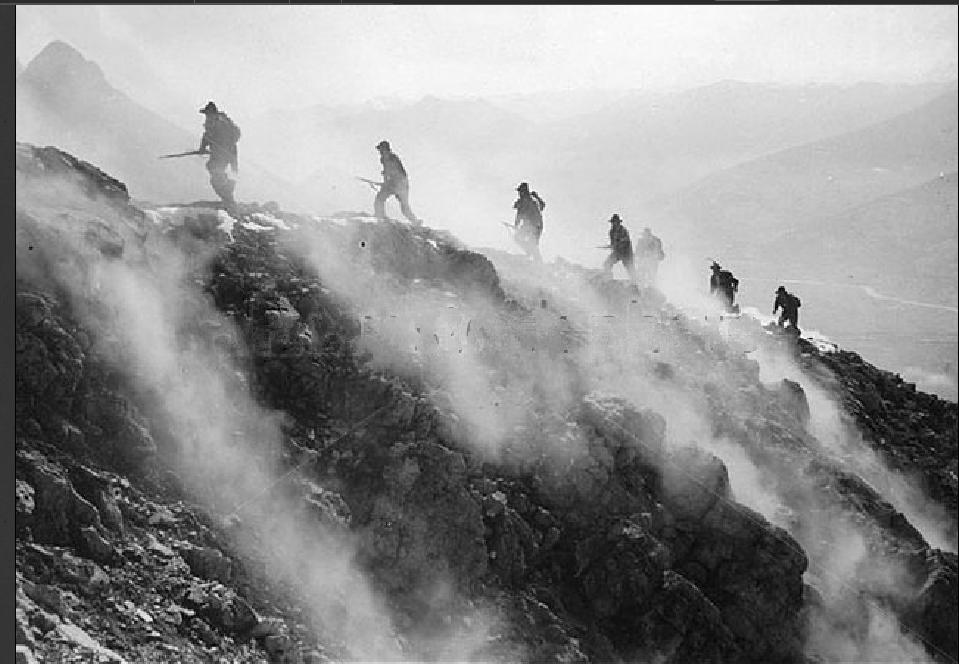 Macedonia Front Macedonia FrontBritish gain ground towards Machukova (south of Gevgeli, Macedonia). West of Vardar River (Serbia), Serbian troops storm Bulgar entrenchments. Kavalla (Greek Macedonia) occupied by Bulgarians. Naval operations: Celtic SeaHeinrich Jeß, commanding U-79, sinks British freighter SS COUNSELLER, 4,958 tons, bound from San Francisco to Liverpool with a load of barley and timber. This is his first sinking. Naval operations: English ChannelOtto Steinbrinck, in UB-18, sinks Norwegian freighter SS ETHEL, 1,122 tons, carrying a load of coal from Barry to Honfleur. His score is now 83 ships and 79,810 tons. Naval operations: Ionian SeaHans von Mellenthin, in UB-43, torpedoes British freighter SS ITALIANA, 2,663 tons, travelling from Roas Bay to Salonika with a load of hay. This is Mellenthin's first sinking Rudolf Singule, in Austrian submarine U-4, torpedoes British freighter SS INVERBERVIE, 4,309 tons, travelling from Cardiff to Taranto with a load of coal. The ship is carrying four motor launches as deck cargo. As INVERBERVIE sinks the launches float free. Singule opens fire on them with his deck gun. ML 230, 253 and 255 are sunk with the deck gun. ML 246 is damaged. Also this day Singule stops Italian freighter SS ITALIA, 3,498 tons, carrying a load of coal from an unnamed port to Taranto. Scuttling charges are laid and, when the ship doesn't sink, U-4 opens fire with her deck gun. ITALIA still doesn't sink, and Singule departs the area leaving the damaged freighter to make her way to a safe harbor. Singule's score is now 13 ships and 12,r61 tons. Naval operations: German East AfricaBritish monitor HMS SEVERN moves from Dar-Es-Salaam to Kwale Island, where she fires on a suspected German camp.
|
|
lordroel
Administrator
Posts: 68,066 
Likes: 49,466
|
Post by lordroel on Sept 15, 2021 2:46:16 GMT
Day 778 of the Great War, September 15th 1916YouTube (Beasts of Steel - The First Tanks On The Battlefield)Western Front: First Use of Tanks in BattleThe day for the introduction of the tank, the supposedly war-changing weapon, had finally arrived. It was hoped that 49 tanks, sent in ahead of the infantry, could crush barbed wire, cross and clear enemy trenches with machine guns, destroy fortified strongpoints, and generally terrorize the Germans. Artillery tactics, honed over the course of the Somme, were modified to accommodate the tank, with mixed results. To allow the slow-moving tanks to precede the infantry, and to avoid creating new shell craters that could impede their progress, 100-yard-wide lanes were left in the bombardments for the tanks. An aerial observer described: We found the whole front seemingly covered with a layer of dirty cotton-wool – the smoking shell-bursts. Across this were dark lanes, drawn as it might be by a child’s stubby finger in the dirty snow. Here no shells were falling. Through these lanes lumbered the tanks. Outside these lanes, the barrage (where it was targeted correctly) was devastating. One German survivor recalled: A sea of iron crashed down on all the front…The noise was terrible. Impact after impact. The whole of no man’s land was a seething cauldron. The work of destruction grew and grew. Chaos! It was impossible to imagine that anyone could live through it…It was like a crushing machine, mechanical, without feelings; snuffing out the last resistance with a thousand hammers. Photo: Four Mark I tanks filling with petrol, Chimpanzee Valley, 15 September 1916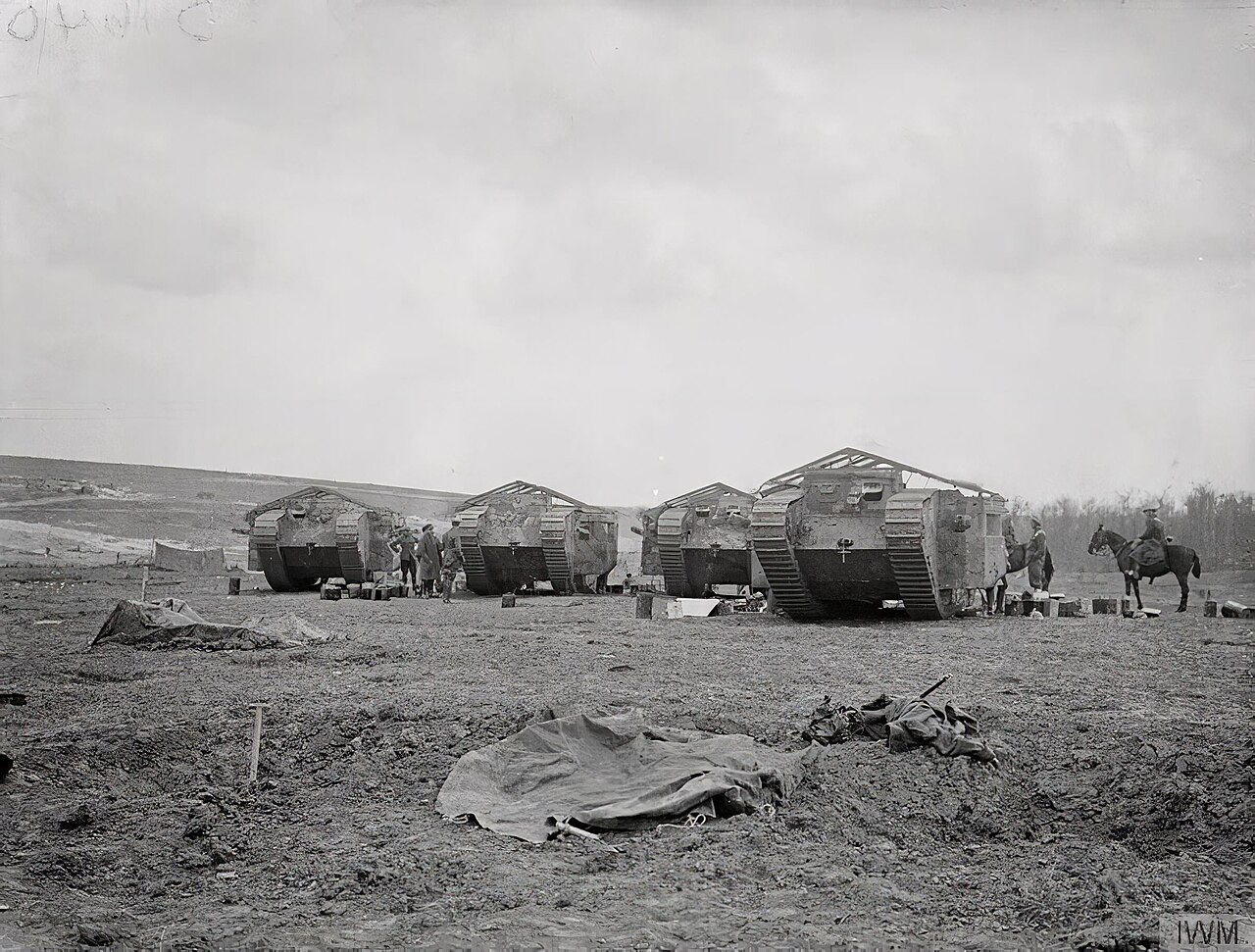 Inside the lanes, however, the German defenders were unscathed. In some places, the tanks worked as intended and these positions were overrun. In others, tanks broke down, became stuck on tree stumps or (in one embarrassing case) to each other, leaving the Germans in the lanes free to fire on the infantry advancing on either side. This caused a complete failure of the right flank of the assault, along with a failure in spotting that left a German position known as the “Quadrilateral” completely untouched by the bombardment. Lt. Raymond Asquith, the PM’s son, was killed while leading an attack in this area. Elsewhere, where the tanks worked properly or lanes were not left for them, the attacks succeeded, gaining a few thousand yards and the villages of Flers and Courcelette. D-17 was the first tank into Flers; her gunner recalled the difficulties of being one of the first tanks in combat: Having crossed the front German line I could see the old road down into Flers…We made our way down the remnants of this road with great difficulty. Just as we started off our steering gear was hit and we resorted to steering by putting the brake on each track alternatively… We were fired on by German machine guns. First of all they were firing on the starboard side and the impact of their bullets was making the inside of the armour plate white hot. And the white hot flakes were coming off and if you happened to be near enough you could have been blinded by them. Fortunately, none of us on the starboard side caught it. But there was a gunner, Gunner Sugden, on the port side who was wounded that way. We went on and Percy Boult was rather upset about this machine gunner and he said, “I can spot him, I think, he is up in the rafters!” He was a pretty good shot and he scored a bull’s eye on the target and brought him down. Having steered the engine by using the brakes up to this point, the engine was beginning to knock very badly and it looked as if we wouldn’t be fit to carry on very much further. We made our way up the main street, during which time my gunners had several shots at various people who were underneath the eaves or even in the windows of some of the cottages. We went on down through the High Street as far as the first right-angle bend. We turned there and the main road goes for a matter of 200-300 yards and then turns another right angle to the left….But we did not go past that point. At this point we had to make up our minds what to do. The engine was really in such a shocking condition that it was liable to let us down at any moment. So I had a look round, so far as it was possible to do in the middle of a village being shelled at that time by both sides. I could see no signs of the British Army coming up behind me. So I slewed the tank round with great difficult on the brakes. Photo: a Mark I series tank and crewman at Thetford in "Solomon" camouflage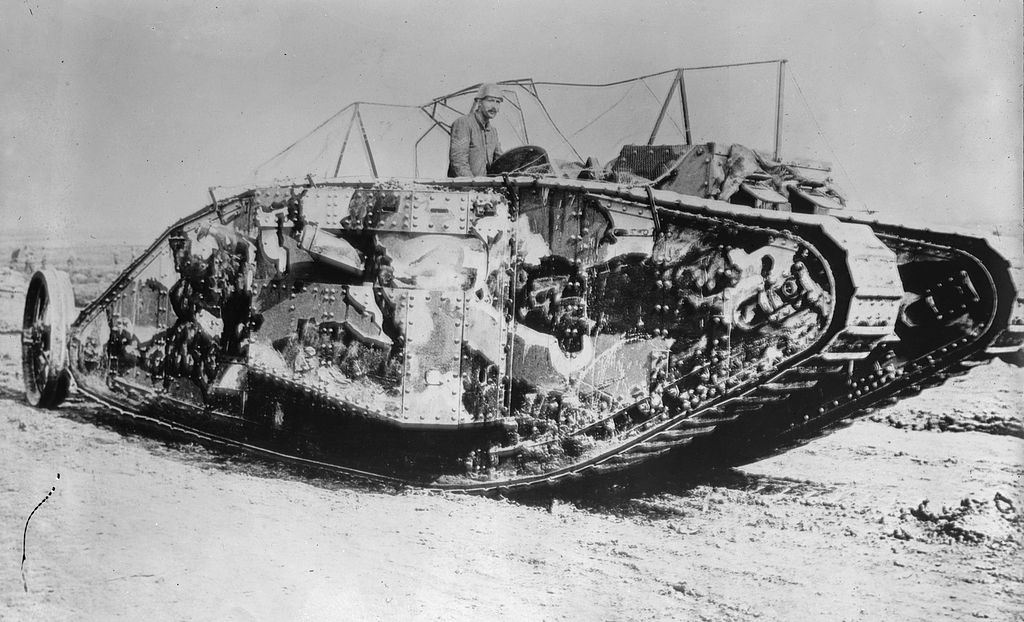 They found the infantry soon after that, but the engine gave out shortly after getting it off the road. The machine guns, mounted especially for the tank, could not be effectively taken out of the tank and used elsewhere. Note that it had taken quite a lot of damage to put it out of commission, however, which frustrated the Germans considerably. Lt. Braunhoffer, defending the area around Flers, wrote of his troops’ difficulty with another tank: A tank appeared on the left front of my company position which I immediately attacked with machine-gun and rifle fire and also, as it came closer, with hand grenades. These unfortunately caused no real damage because the tank only turned slightly to the left but otherwise just carried on. He crossed the trenches in the area of the company on my left, caused us heavy losses with his flanking machine gun fire on trenches which had to a large extent been flattened, without my men being able to do anything about it. Despite the considerable British successes on the day, they still fell short of Haig’s overoptimistic goals, and the troops, having taken nearly 30,000 casualties, were in no condition to push further with anything but sporadic attacks the next day. The tanks had not opened up the way for the cavalry, but now had made their presence known to the Germans. Photo: The Mark I 'Male' tank 'C19' 'Clan Leslie' in Chimpanzee Valley preparing for the advance on Flers Photo: ammunition pack horses going up between Guillemont and Ginchy. 15 September 1916 Photo: ammunition pack horses going up between Guillemont and Ginchy. 15 September 1916 Photo: Troops of the 2nd Canterbury Battalion, New Zealand Division, rest in a shell hole, Battle of Flers-Courcelette Photo: Troops of the 2nd Canterbury Battalion, New Zealand Division, rest in a shell hole, Battle of Flers-Courcelette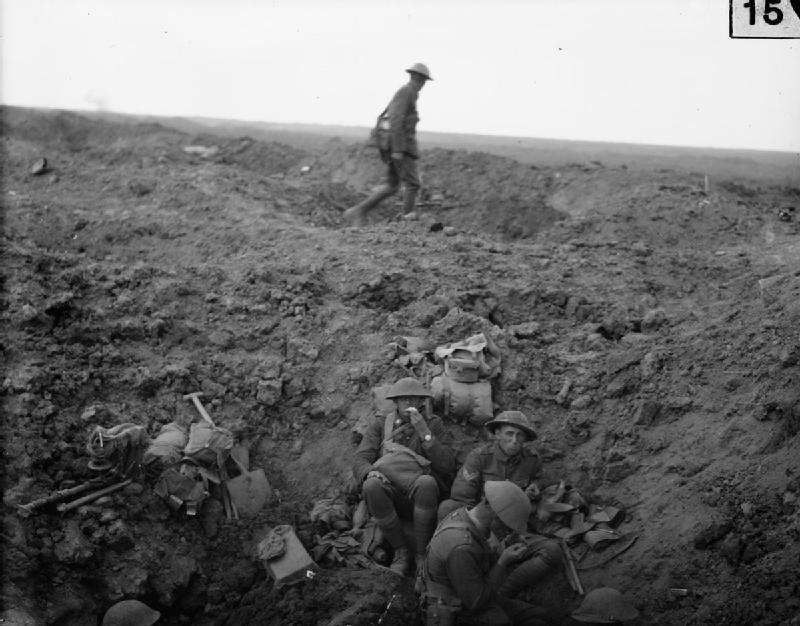 Photo: French heavy mortar and crew during the Battle of the Somme, 15 September 1916. The weapon is a Mortier de 370 Filloux Photo: French heavy mortar and crew during the Battle of the Somme, 15 September 1916. The weapon is a Mortier de 370 Filloux Italian Front Italian FrontLower Isonzo: Italians take San Grado, strong entrenchments towards Loquizza, and over 1,800 prisoners.
|
|
lordroel
Administrator
Posts: 68,066 
Likes: 49,466
|
Post by lordroel on Sept 16, 2021 2:46:36 GMT
Day 779 of the Great War, September 16th 1916Western FrontSomme near Courcelette the British front advanced 1,000 yards; "Danube" trench taken, and Mouquet farm (Thiepval) captured. Photo: A French Army 370mm mortar being fired from a gully known as La Baraquette"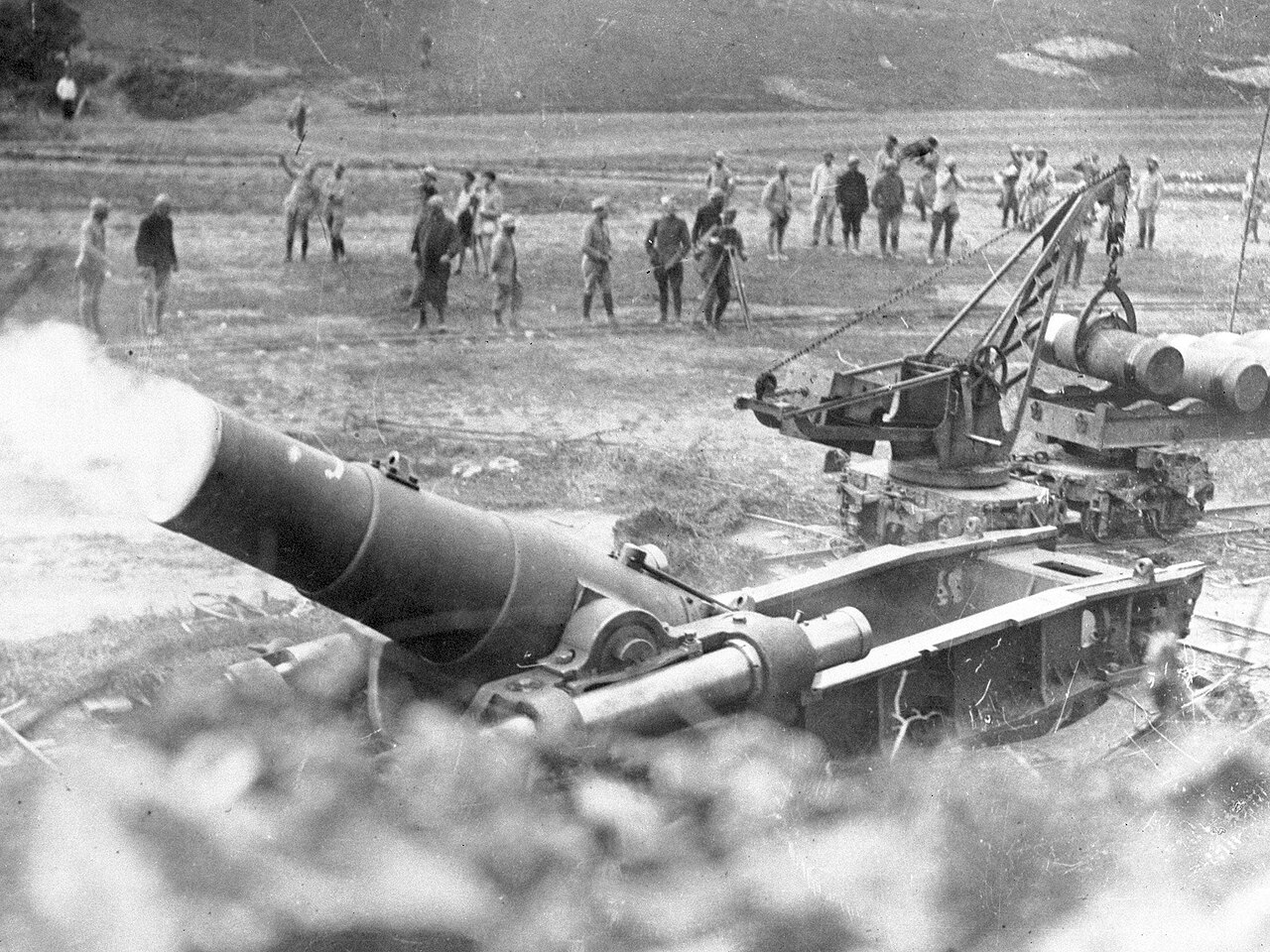 Eastern Front Eastern FrontHalicz front, Russians capture a position right bank of Zlota Lipa and many prisoners. Along the Narajowka many Germans taken as well as Turks. In the Dobruja, General Averesco (new Commander-in-Chief Romanian Army) arrives at front. Romanians occupy Baraoltu dominating railway from Brasso to Foldvar (30 miles from Romanian frontier). Romanian Campaign: Falkenhayn Given Command of German Forces in TransylvaniaThe Romanians had outnumbered the Hungarians along the Transylvanian border by perhaps 10-to-1 at the start of the war, facing essentially only border guards, local militia, and in one case, armed miners. However, they had advanced quite slowly, pushing no more than about thirty miles from the border in the three weeks since the declaration of war. And this too was about to slow, as Romania on the 15th ordered half of her troops south to face the threat from Mackensen coming north from Bulgaria. In the meantime, German and Austro-Hungarian troops (including a young Lt. Erwin Rommel) were rushed south to Transylvania to halt and push back the Romanians. Given command of the newly reformed German Ninth Army in Transylvania was none other than Falkenhayn, who received the command on September 16 and arrived in Karlsburg two days later. Romania’s entry into the war had cost Falkenhayn his position as Chief of the General Staff; whether he viewed this new posting as an insult is unknown. East Africa CampaignLindi (port in southern German East Africa) occupied by British. Mexican Border WarPhoto: Inspecting packs, Company M, 16th Infantry., El Valle, Mexico, September 16, 1916. Orderly-room and bulletin board, in foreground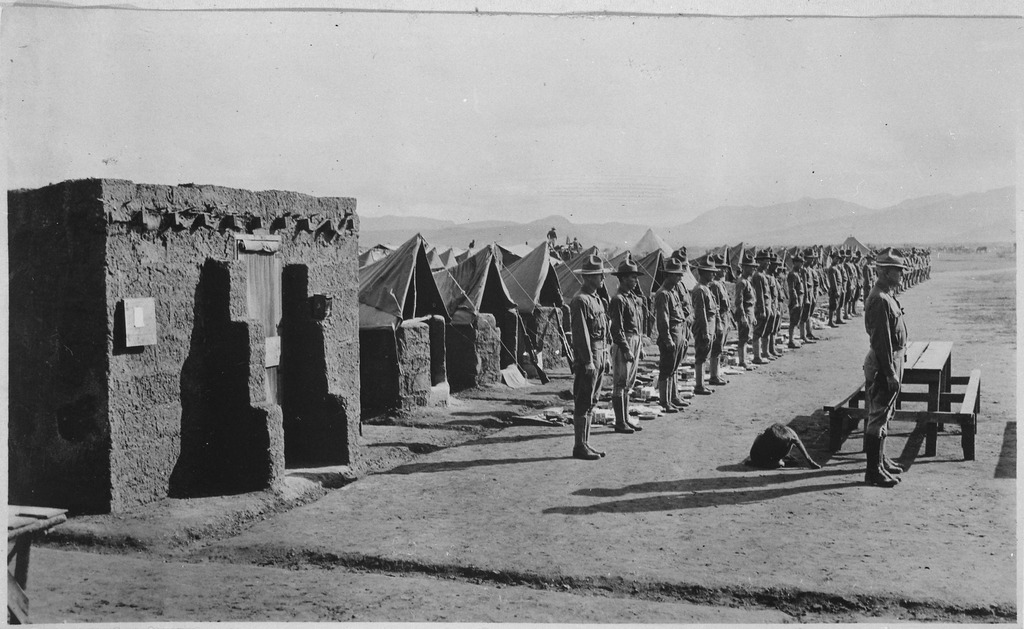 Naval operations: German East Africa Naval operations: German East AfricaMonitor HMS SEVERN makes a scouting trip up the Rufiji River, site of the battle with SMS KONINGSBERG almost two years earlier. Her ship's log notes that the defenses at the river mouth are deserted. She then passes the wreck of SS NEWBRIDGE, sunk as a blockship to keep KONINGSBERG from escaping. After observing that the village of Salale seems to be empty SEVERN turns around and heads back downriver. Meanwhile, 220 miles south of Dar-Es-Salaam light cruiser HMS TALBOT opens fire on the beaches at Lindi, then lands a party of troops. After they have returned TALBOT heads back to her anchorage at Sudi.
|
|
lordroel
Administrator
Posts: 68,066 
Likes: 49,466
|
Post by lordroel on Sept 17, 2021 6:15:52 GMT
Day 780 of the Great War, September 17th 1916Western FrontSouthern Somme: French attack, taking Vermandovillers and Berny, Deniecourt surrounded, German reserves much cut up, many prisoners. Photo: The Battle of Flers Courcelette: The Mark I tank (D 17) surrounded by some of the infantry from 122nd Brigade (41st Division) whom it led into eastern part of Flers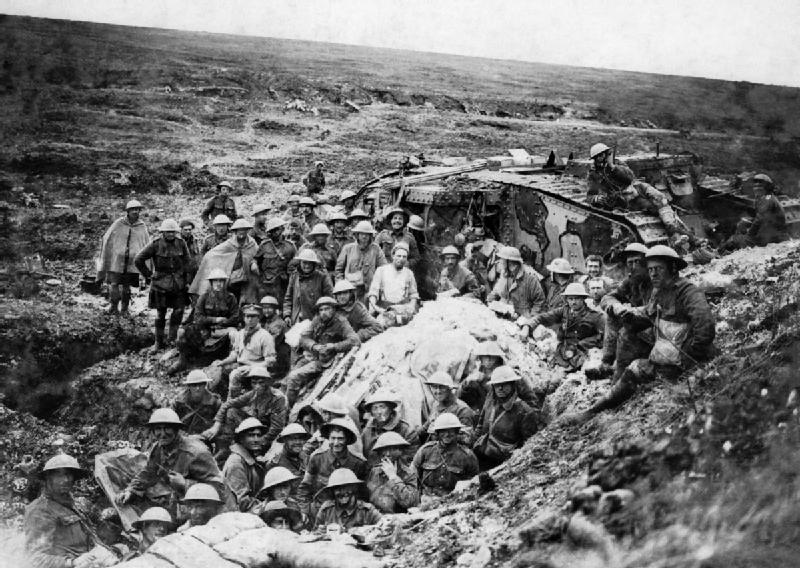 Photo: Despatch riders of the 9th Hodson's Horse (Bengal Lancers), Indian Army, coming in from Flers, 17th September 1916 Photo: Despatch riders of the 9th Hodson's Horse (Bengal Lancers), Indian Army, coming in from Flers, 17th September 1916 Eastern Front Eastern FrontRomanians between Petrozseny and Hatszeg (Western Transylvania). Italian FrontItalian success on the Carso. Photo: Italian Army: Seventh Battle of the Isonzo - Italian reinforcements Sinai and Palestine campaign Sinai and Palestine campaignBritish attack and occupy Mazar (northern Sinai). Turks withdraw to El Arish. Aerial operations: Richthofen Scores First Confirmed VictoryOswald Boelcke, Germany’s top fighter pilot, had been working to re-establish the German air superiority over the Western Front that had been lost early in the summer. This included the formation of dedicated fighter squadrons (Jagdstaffeln or “Jastas”) and promotion of improved aerial combat tactics. He also quickly embraced the new Albatros D.II fighters, quicker than their predecessors and armed with twin machine guns. Boelcke and his Jasta 2 squadron first used these in combat on September 17, using them to intercept a British bombing raid returning from an attack on a railway station on Marcoing. Boelcke’s squadron was able to shoot down 5 of the 8 bombers. Manfred von Richthofen was able to shoot down one of the fighter escorts. He recalled: “I was animated by a single thought: the man in front of me must come down.” Approaching the plane from below as it tried to escape, Richthofen fired his machine guns at point-blank range, killing the plane’s gunner/observer and taking out the engine. The pilot was grievously wounded but was able to land the plane safely at a German airfield; he would die of his wounds later that day. This was Richthofen’s first confirmed victory over an enemy aircraft; it is likely that he had had two earlier in the year, but as they occurred over French lines, they could not be confirmed. Aerial operations: Meanwhile in the MedAs the fighting has intensified on the Western Front, things have also got rather hot for the RNAS Seaplane Carriers serving in the Mediterranean Sea. Today, the BEN-MY-CHREE was sent out to spot for the Espiègle and monitors M15 and M31, which were set 10 miles apart. Commander Charles Rumney Samson had requested that they simplify on one target but he was over-ruled. The BEN-MY-CHREE arrived at El Arish at dawn. The seaplanes split into two flights. One Short seaplane with Flight Lieutenant Percy Herbert Maskell and Sub-Lieutenant James Leslie Kerry) and two Schneider seaplanes with Flight Lieutenant John Thearsby Bankes-Price and Flight Sub-Lieutenant Alfred James Nightingale, spotted for the monitors. Another Short seaplane with Flight Commander Tom Harry England DSO and Sub-Lieutenant King) and two Schneider seaplanes with Commander Samson and Flight Sub-Lieutenant William Man) for the Espiègle. The second flight found no targets and returned to the BEN-MY-CHREE where the Short seaplane landed and the two Schneider seaplanes flew on to reinforce the first flight. Flight Sub-Lieutenant Man had engine trouble and crashed but was rescued by a trawler. Commander Samson found the monitors were not firing and flew inland to search for the first flight but without success and returned to the ship. Pas it turned out, the first flight had just started spotting when a German aircraft separated the Short seaplane from its escorts. Bankes-Price engaged the enemy aircraft but without warning his Schneider seaplane burst into flames killing hIm. The Enemy aircraft then forced down the other Schneider seaplane. Flight Sub-Lieutenant Nightingale was subsequently picked up by a monitor and his aircraft by a trawler. The Short seaplane was then attacked but Flight Lieutenant Maskell flew under the German landplane and Sub-Lieutenant Kerry fired a long accurate burst hitting the enemy aircraft. It then flew off, but the Short seaplane was too slow to give chase. Whilst all this was going on, the Ben-my-Chree was attacked by three German aircraft who dropped eight bombs without damage. The whole force then returned to Port Said. Naval operations: Mediterranean SeaHans von Mellenthin, commanding UB-43, sinks two ships near Malta: British freighter SS DEWA, 3,802 tons, travelling in ballast from Toulon to Port Said. British freighter SS LORD TREDEGAR, 3,856 tons, bound from New York for Bombay with a general cargo. Von Mellenthin's score is now 3 ships and 10,321 tons. Naval operations: German East AfricaMonitor HMS SEVERN moves to Mohoro Bay, balloon ship HMS MANICA in company. 0845 SEVERN anchors in Mohoro bay and 6" gun crews prepare to fire on a German camp near Marendego Village. 0855 MANICA sends up an observation balloon. 0925 After half an hour of observation the balloon observer has been unable to see the enemy position. SEVERN secures her guns. 0950 SEVERN and MANICA depart the area for Selo Shoal.
|
|
lordroel
Administrator
Posts: 68,066 
Likes: 49,466
|
Post by lordroel on Sept 18, 2021 9:10:53 GMT
Day 781 of the Great War, September 18th 1916Western Front: British Take the Quadrilateral After the (mixed) successes of the Allied push on the 15th, Haig was eager to attack again, along a broader front, with the help of the French. The exhausted state of the troops, poor weather, and the difficulties of inter-Allied cooperation delayed the new offensive, but in the meantime the Allies were able to make subsidiary attacks for tactical objectives. Many of the ones conducted on the 16th and 17th failed, as usual, but they had more luck on the 18th, with a hastily-conceived attack on the Quadrilateral. The attempt to take this strong German position had failed on the 15th due to poor artillery spotting; the artillery bombarded the wrong side of a small ridge, leaving the Quadrilateral itself essentially untouched. The orders for the attack were drawn up the night before. Lt. Col. Dillon, placed in charge of the attacking battalion, recalled the disorganized preparation: [The Brigadier] then told me that the Colonel [of my battalion] had broken down…that I was in Command of the battn. and that we would attack at dawn, and that he would let me have orders as soon as possible. I had…a conference of C.O’s, all of which was absolute Greek to me not knowing where the Bn. was or what we were going to attack etc. So I sat quiet and said yes and no and tried to look dignified. At 5 p.m. we were all asked if we quite understood and as we all said yes the show finished. I then got hold of an intelligent young staff officer and in ten minutes, with my map, had chalked the whole thing and made him promise to send me orders at the first possible opportunity and then we went to my headquarters….On arrival I found the adjutant in a state almost of collapse, the doctor wounded, and apparently no one knew where the companies were. Fortunately, the pressure was relieved with the arrival of orders….[But] by this time…it was 8 p.m. and quite dark and the attack was to start at 5.50 am. Nobody seemed to know the way and everybody we met was dead or wounded….It was getting very late now and the shelling was [very] heavy, and I was really rather in trouble, as had I got straffed [sic] I had all the orders on me and nobody would have known what was happening. Despite this, the attack itself went well: At 5.30…the barrage was just starting….Our own guns had it all their own way for 15 minutes by which time the lads were over. What happened was two of our Companies went over the top in front and got hit badly, a third (and this is where I disobeyed orders) came in from [the flank]. Rushed the Hun strong pts bombed and bayoneted down the trench. The two unfortunate Companies got up and went for the boche and it seems incredible but in 10 minutes they had the whole boche line. In the meantime my 4th Coy. had gone straight on and made a strong pt 600 yards beyond and they caught the remaining Germans across the open. We captured 500 yards of front, advanced 1,000 yds. One mortar, one machine gun, 100 German prisoners and countless bombs. German dead God knows. Elsewhere along the line that day the British made further small gains, occupying some minor trench lines without German opposition. The French to the south were able to pull off some surprise attacks, taking several thousand German prisoners and three small villages. Eastern FrontHeavy fighting at Merisor (Transylvania), Romanians moving towards Hatszeg. Romanian Campaign In Dobruja, Russo-Romanians fall back to Rasova-Tuzla line. Map: Romanian invasion of Austria-Hungary, August TO September 1916 Photo: A bridge destroyed by the enemy in his retreat Photo: A bridge destroyed by the enemy in his retreat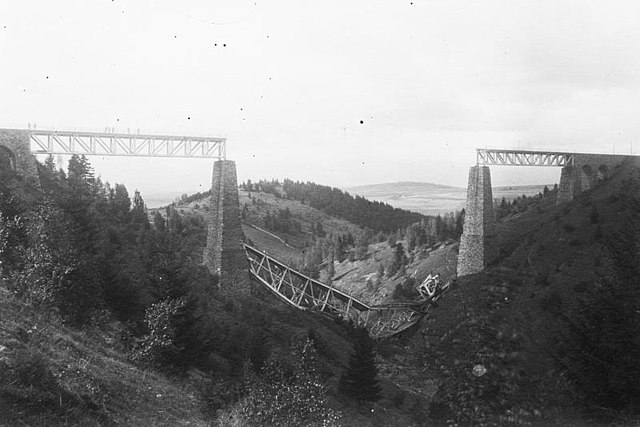 Macedonia Front Macedonia FrontFranco-Russian troops enter Florina (Macedonia), enemy retreating on Monastir. Serbs occupy parts of Mt. Kaymakchlan. Mesopotamian campaignBritish aeroplanes bomb enemy aerodrome in the Shumran bend (above Kut-el-Amara). Sinai and Palestine campaignBritish raid Birel Tawal (30 miles south of El Kubri, Suez). Germany: Hindenburg Industrial Program Deports 700,000 Forced Belgian Laborers to GermanyThe German Empire continued to suck its occupied territories dry in September 1916 when Hindenburg recommended that at least 700,000 Belgian workers be deported to Germany to take part in a newly devised “Hindenburg Industrial Program”. This also involved recruiting more Germans for the factories as a part of a program to mobilize Germany’s industrial power and boost the war effort, now seriously threatened by the more numerous and richer Allies. The move spurred repulsion outside the Central Powers, but sparked little dissent in Germany. Jewish industrialist Walther Rathenau, who had urged European unity and peace before, wrote to Hindenburg expressing support for the deportation of more Belgian workers. In America, public opinion was aghast, however. Cardinal Farley of New York penned that “You have to go back to the times of the Medes and the Persians to find a like example of a whole people carried into bondage.” President Wilson reflected American indignation by telling his Ambassador in Berlin, James W. Gerrard, to bring up the matter to the German Chancellor. Gerard told the Chancellor that “There are Belgians employed in making shells, contrary to the rules of war and the Hague Convention.” “I do not believe it!” responded the Chancellor. Gerard offered to show him personally: “My automobile is at the door. I can take you in four minutes to where thirty Belgians are working on the manufacture of shells.” The Chancellor declined the invitation. Aerial operations: A brief respitePoor weather grounded most aircraft today and little enemy activity was noted over the front. This was just as well for the RFC and its beleaguered crews given the beating it has taken over the last few days. The air superiority the RFC experienced during the Spring and early Summer of 1916 has been rapidly eroded by new faster and better armed German aircraft and a change in tactics following the reorganisation into Jastas. Losses so far in September have been 37 killed and 30 taken prisoner and many others wounded. This compares to 33 and 24 in the whole of August. Naval operations: Black SeaKonrad Gansser, commanding U-33, sinks two small Russian fishing vessels off the coast of Romania. Naval operations: German East AfricaAt Kilwa Kivinje battleship HMS VENGEANCE and monitors mERSEY and SEVERN recover guns and crews from shore.
|
|
lordroel
Administrator
Posts: 68,066 
Likes: 49,466
|
Post by lordroel on Sept 19, 2021 6:49:07 GMT
Day 782 of the Great War, September 19th 1916Western FrontBad weather hinders both British and French operations. Eastern FrontDesperate fighting on Narajowka river, Halicz region. Germans claim success here and on Stokhod (Pripet); many prisoners. In Galicia, heavy fighting for three days past. Romanian Campaign Romanians in Dobruja, holding the Rasova-Tuzla position, defending the railway Bucharest-Constanza, heavily engaged. Heavy fighting in defile of Merisor (Transylvania) west of Petrozseny. Battle lasts two days. Romanians successful. Macedonia FrontThe Serbo-Russian-French Army advances, making great turning movement in their march on Monastir. Allied blockade of the Greek Macedonian Coast, from River Struma to River Mesto. East African campaign: Belgian Offensive Captures TaboraBelgium may have lost more than 90% of its land in Europe to Germany, but they still had their overseas empire in the Congo. Although the defense of what remained of their homeland was the top priority, the Belgian administration in the Congo was eager to strike the Germans where they still could–at German colonies in Africa. They had contributed some small forces to the conquest of Kamerun [Cameroon], but an attack against German East Africa had been beyond their capabilities until 1916, held up in part due to Belgian distrust of Britain’s colonial aims in Africa. That summer, in conjunction with Smuts’ advance from Kenya, a force of 10,000 under General Tombeur advanced through what is now Rwanda and Burundi to Kigoma, the western terminus of the Central Railway, taking it on July 28. Over the next month and a half, Tombeur’s forces pushed east along the Central Railway towards Tabora, the German provisional capital in the colony after the Governor left Dar es Salaam. From the north, British forces advanced from Lake Victoria, and the Germans arrayed their troops to defend against the British. After ten days of fighting in September, the Belgians outflanked and dislodged the Germans from the west. On September 18, realizing that the Belgians now occupied hills overlooking Tabora, the Germans evacuated the city. A decoy force headed east along the Central Railway, while the Governor and most of the troops headed southeast through largely uncharted territory to join Lettow-Vorbeck’s forces. The Belgian flag was raised over the city at 10:30 AM on September 19; the British were still six days away. They liberated 200 Allied POWs that had been kept there, as well. Smuts wanted the Belgians to pursue the retreating Germans, which Tombeur did not do. Smuts believed this was for political reasons (the Belgians hoping to annex the region after the war), but Tombeur could not have advanced had he wanted to. The Belgians had taken heavy casualties, a meningitis outbreak had caused many deaths among his porters, and German scorched earth tactics meant that supplies were difficult to come by. Photo: The takeover of Tabora by the Belgian army Germany: Hindenburg Orders “Semi-Permanent” Defense Line Constructed in Depth Germany: Hindenburg Orders “Semi-Permanent” Defense Line Constructed in DepthField Marshal Hindenburg issued instructions for a “semi-permanent” new defensive line to be constucted behind the Western Front, five to thirty miles in places behind the current front lines. This was the genesis of the Hindenburg Line, a massive defensive complex of trenches, wire, and bunkers in a great array of depth, designed to slow the Allied advance. The German Army would retire from its pounding on the Somme later to these positions, giving up useless ground and forcing the Allies to prepare to drive them out of an even stronger position. Naval operations: Tyrrhenian SeaLothar von Arnauld de la Perière, commanding U-35, is back in action, sinking two ships between Sardinia and Sicily: 0715 Italian barque DORIDE, 1,250 tons, travelling in ballast from Milazzo to Pensacola. Sunk with deck gun. 1800 Italian schooner TERESA C., 270 tons, no other details available. Von Arnauld's score is now 104 ships and 197,461 tons. Naval operations: ToulonPhoto: The French cruiser JURIEN DE LA GRAVIERE at Toulon, prior to drydocking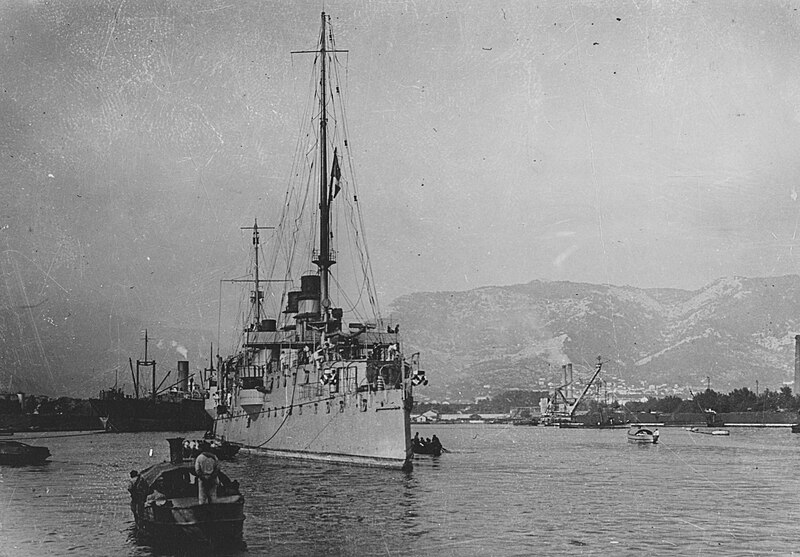
|
|
lordroel
Administrator
Posts: 68,066 
Likes: 49,466
|
Post by lordroel on Sept 20, 2021 2:45:13 GMT
Day 783 of the Great War, September 20th 1916Western FrontSomme: German counter-offensive against French fails. From Combles to the river, an attack with six divisions suffered heavy losses. South of the Ancre, Germans during night attacked New Zealand troops without success. Photo: The badly shelled main road to Bapaume through Pozieres, showing a communication trench and broken trees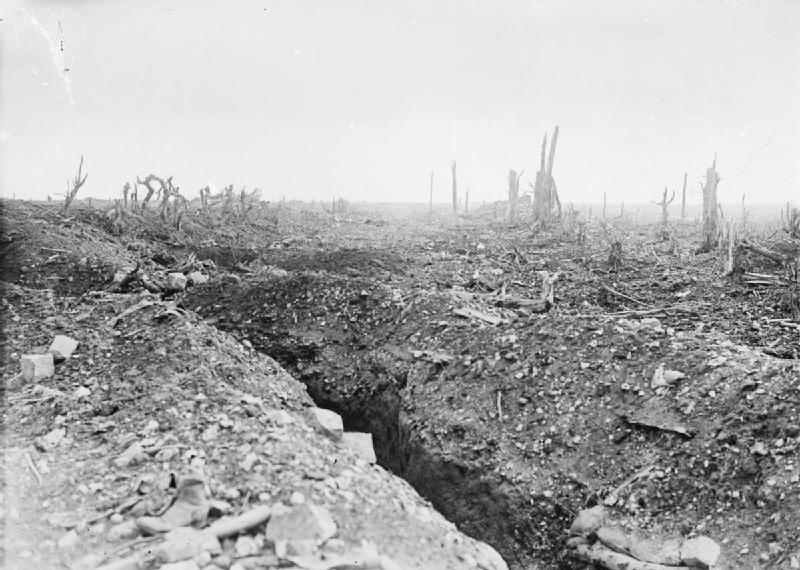 Eastern Front: Brusilov’s offensive ends in failure Eastern Front: Brusilov’s offensive ends in failureThe Brusilov Offensive is over. In its early days, it brought the Austro-Hungarians close to collapse. Their line was only stabilised by the commitment of significant quantities of German reinforcements. The price of this aid has been the German take-over of the Austro-Hungarian army. The ancient Habsburg Empire is now little more than a client state of the arriviste Germans. Brusilov’s offensive was meant to have been followed by another against the Germans to the north by Evert, with the rolling offensives denying the Central Powers the option of concentrating against any one threat. Unfortunately Evert’s offensive was still-born, thanks to his use of unimaginative human wave assaults. With Evert’s failure the Russians sent more reinforcements to Brusilov, but in an increasingly attritional battle the superior transport links and armaments of the Germans swung the battle in their favour. The offensive’s failure embitters Brusilov, who feels that he has been let down by his fellow officers. The scale of blood-letting in the fighting is almost unimaginable. Russian casualties are variously estimated as being in the range of 500,000 to 1,000,000, with similar losses for the Austro-Hungarians and Germans. The bloodbath has effectively brought an end to Austro-Hungarian independence, but the offensive’s failure now threatens the credibility of the Tsarist regime in Russia. Map: Plan of May. Right: Frontline at the end of Brusilov offensive in September 1916 Italian Front: Seventh Battle of the Isonzo Called Off After Heavy Losses on Both Sides Italian Front: Seventh Battle of the Isonzo Called Off After Heavy Losses on Both Sides The Seventh Battle of the Isonzo ended inconclusively several days after it began, called off due to high losses on both sides. The Italian attackers took about 17,000 casualties, the Austro-Hungarians slightly fewer. Although the success of the Sixth Battle of the Isonzo had not been repeated, the Italian battles contributed to continuing to wear down the haggard Austrian military, which could not keep up with the losses it was sustaining on the Eastern and Italian fronts. Photo: Italian troops with a captured Austrian machine gun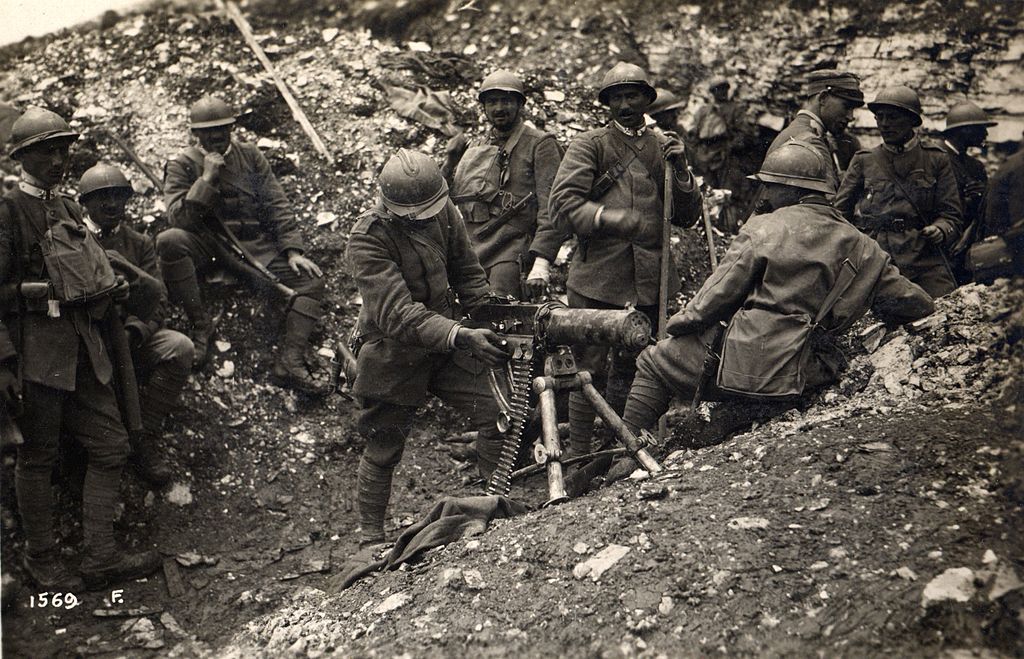 East African Campaign East African CampaignPortuguese troops cross the Rovuma river, separating German from Portuguese East Africa; enemy after feeble resistance abandon their trenches. British occupy Kisiwere Port. Free Polish movement: Polish Legions Become “Polish Auxiliary Corps”Some Poles in Austria and Germany saw the war against Russia as an opportunity for their national ambitions, chief among them the Józef Piłsudski. On the outbreak of war, Piłsudski formed Polish Legions as part of the Austrian Army, hoping to quickly liberate his fellow Poles in Russia. These hopes were appearently realized after the Great Retreat of 1915, in which the Central Powers took all of Russian Poland. In practice, Poland was divided between German and Austrian zones of occupation, with the native Poles having essentially no say in the administration. After a year of occupation, there was essentially no change. Austria still wanted control of Poland for herself, but the Hungarians were largely opposed (fearing it would result in a “trialist” system that would diminish their power in the Empire). However, Austrian ability to make demands of Germany was slipping with their decreasing military strength. In Germany, Hindenburg & Ludendorff, newly empowered, wanted Polish recruits to fight in the war, and were willing to make concessions to the Poles in order to do so; however, they faced an increasingly annexationist political atmosphere at home. Piłsudski grew impatient with the lack of change, and during the summer resigned his positions with the government in Galicia, though maintaining his military affiliation with the Legions. He began to call more stridently for Polish independence, increasingly worrying the Austrians that his Legions might prove disloyal. On September 20, the Austrians reorganized the Polish Legions into the Austrian Army proper, renaming them the “Polish Auxiliary Corps” and moving them off of the front lines, using them instead to occupy portions of Poland. Aerial operations: Conto RossiThe Admiralty have finally bowed to the inevitable and accepted the the limitations of the current swathe of aircraft carriers. The current designs suffer from a major design flaw in that wheeled aircraft are now able to take off but cannot be landed, meaning the aircraft must be flown back to shore or ditched. The alternative is to use floatplanes of various sorts, but these are difficult to launch and land except in the calmest of weather, severely limiting their availability. Back in 1912, the ship builder William Beardmore had proposed to the Admiralty an aircraft carrier design with a continuous, full-length flight deck, but it was not accepted at that time. The design has now been dusted off and the Admiralty today purchased the Italian ocean liner CONTO ROSSO whose construction by William Beardmore had been suspended at the outbreak of the war. The company will now begin the process of conversion into an aircraft carrier. Naval operations: Barents SeaBritish freighter SS ETTON, 2,831 tons, bound from Barry for Arkangelsk with a load of coal, hits a mine laid by Curt Beitzen in U-75 off Sviatol Nos, at the entrance to the White Sea. Beitzen's score to 5 ships and 15,116 tons. Naval operations: German East AfricaMonitors HMS MERSEY makes a trip up the Rufiji River to examine the wreck of SMS KONINGSBERG while HMS SEVERN guards the river entrance. Also stopping to look at SS NEWBRIDGE, sunk as a blockship in 1914 to keep KONINGSBERG from escaping, and Somali, Königsberg's supply ship. Note from log of cruiser HMS Hyacinth: 2110 O.S. MacDougall fell overboard from steam cutter. Lowered life boats and dropped buoys. Lt Palmer and Mid Murray went overboard to assist. Burnt searchlights. 2120 Lowered 2nd life boat. 22:20 Cutter returned with both officers. O.S. MacDougall lost. Search abandoned. Arthur MacDougall, aged 22. Ord Seaman, British of 32 Bunker Hill Lane, Biltshare, Staffs, died by drowning.
|
|
lordroel
Administrator
Posts: 68,066 
Likes: 49,466
|
Post by lordroel on Sept 21, 2021 2:49:31 GMT
Day 784 of the Great War, September 21st 1916Western FrontAt Verdun, French take trenches south-east of Thiaumont Work and over 100 prisoners. South of the Ancre, during night, British troops advance between Flers and Martinpuich. Photo: A Brigadier and his staff outside Mark I tank 17 of D Company, which was used as his Headquarters. Near Flers Romanian Campaign Romanian CampaignIn Transylvania, Romanian left held up near Vulkan Pass (south of Petrozseny). Fighting in Kealeman and Gorgeny mountains (Transylvania), Romanians taking prisoners. Macedonia FrontAllies pressing along the roads north of Florina. Serbians within sight of Monastir. United Kingdom: UK Manpower Distribution Board FormedThe high casualties suffered by the British Army during the Battle of the Somme meant that fresh replacements were sorely needed. Conscription, formalized and expanded during the spring, was still not providing enough recruits for the army. It was felt that more manpower was available among British workers, many of whom had been given badges to exempt them from the draft despite not working in war-critical industries. On September 21, the Manpower Distribution Board was formed to try to resolve some of these issues. They would work with trade unions to find young men who could be spared from industry for the Army, and to generally decrease the amount of “badging” of workers. While preparing their initial report, they put a temporary moratorium on badging. Skilled workers in critical industries, who would normally receive badges, were outraged; workers at the Vickers munitions plant went on strike. Even after this boiled over, the Manpower Distribution Board faced opposition from trade unions and other government departments, and lacked the authority to overrule them. It was expanded in December into a National Service Department, headed by Neville Chamberlain, in his first role on the national political stage. Naval operations: Black SeaTurkish paddle steamer METANET, 230 tons, bound from Zonguldak for Istanbul with a load of coal, is sunk off Ereğli by a Russian warship. Naval operations: Atlantic OceanGerman cargo submairne BREMEN, 2,272 tons, built as part of the U-151 class but unarmed and meant for transport duties, departs Kiel for Norfolk, Virginia and is not heard from again. There are several theories concerning her fate, one of which has her being sunk by British submarine HMS G-13 as late as March 1917.
|
|





































